Language Learning
Learning a language requires practice, but language learners often have difficulty finding someone they feel comfortable speaking in a new language.
-
Problem Statement
Language learners can learn a new language more effectively, if they can find a native or advanced speaker to help them practice.
-
My Role
From ideation to delivery, I designed a language learning app that helps language learners connect with a native or advanced speaker. I used OptimalSort, AdobeXD, Balsamiq, and Figma.
Competitor Analysis
iTalki
-

Strengths
iTalki’s app provides an easy method to find a teacher on their homepage. A user can also book a teacher directly from their card or profile page.
• 1:1 tutoring with native or advanced speakers.
• Integrated video calls within the program with chat functionality.
• Offers multiple languages with tutors around the world.
-
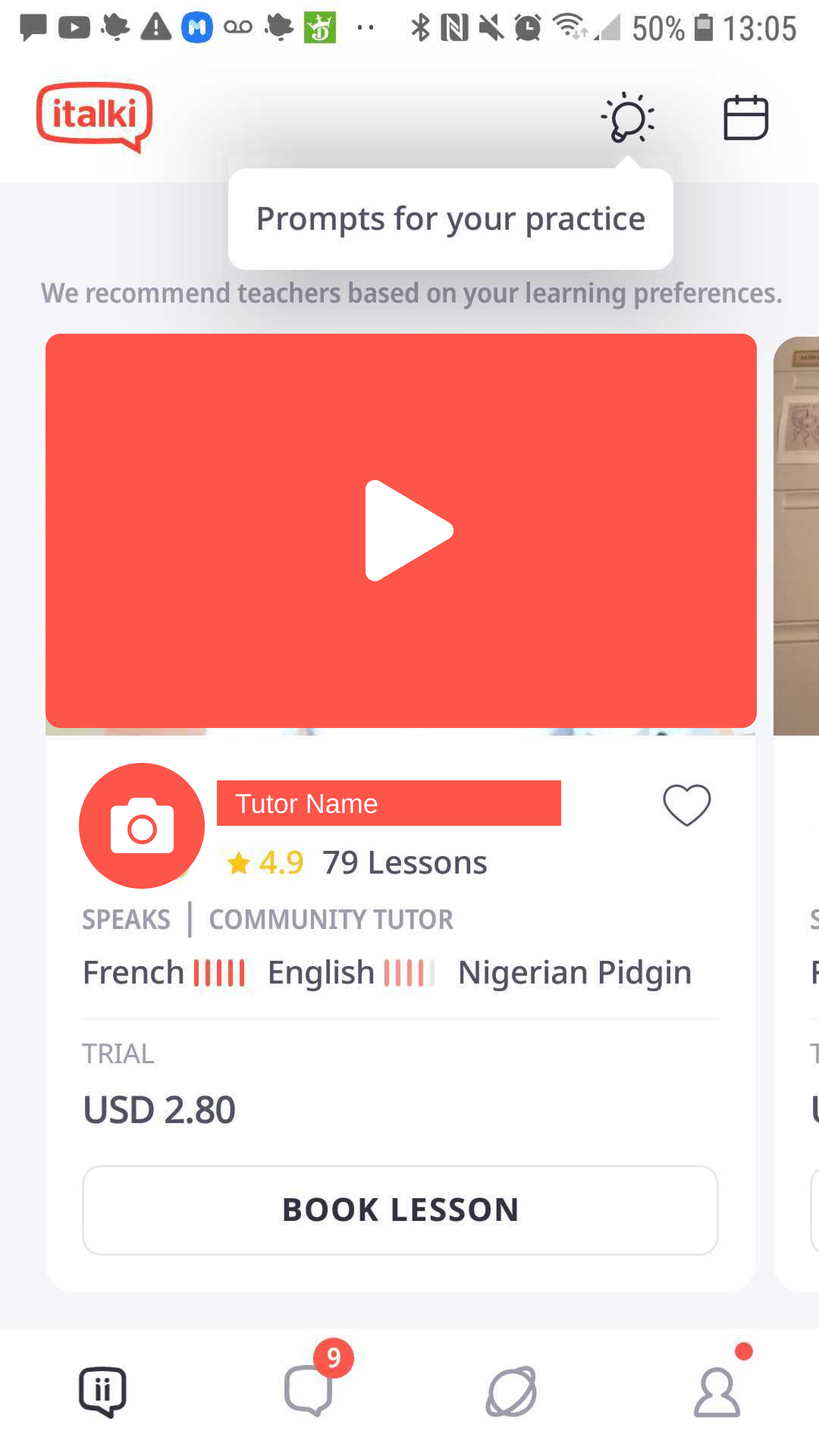
Weaknesses
• No ongoing structured learning.
• Navigation icons aren’t the typical icons used, and are potentially confusing.
HelloTalk
-

Strengths
Using a Freemium model, HelloTalk helps communities of language learners connect with a native speaker of the language that they’re trying to learn who is also trying to learn the language they speak. In this display, Robert is trying to learn English as he teaches me French.
• Meet native speakers globally.
• Notepad helps users with translations.
-

Weaknesses
• No ongoing structured learning.
• Heavy reliance on users’ corrections and their knowledge of the language and willingness to help.
User Research
-
Research Goal #1
I am curious if language learners feel the need to speak the language to a native speaker.
-
Research Goal #2
I want to determine what commitment language learners are willing/can put into learning a new language.
-
Research Goal #3
I want to understand how language learners feel about their current learning process.
-

Affinity Mapping
Scripted interviews conducted via Zoom with participants around the world, gave me insight to language learners’ current motivations, needs, and struggles. Everyone felt that speaking to a native speaker was the best method of learning a language, however, they felt nervous about speaking with native speakers.
User Personas
User Journeys
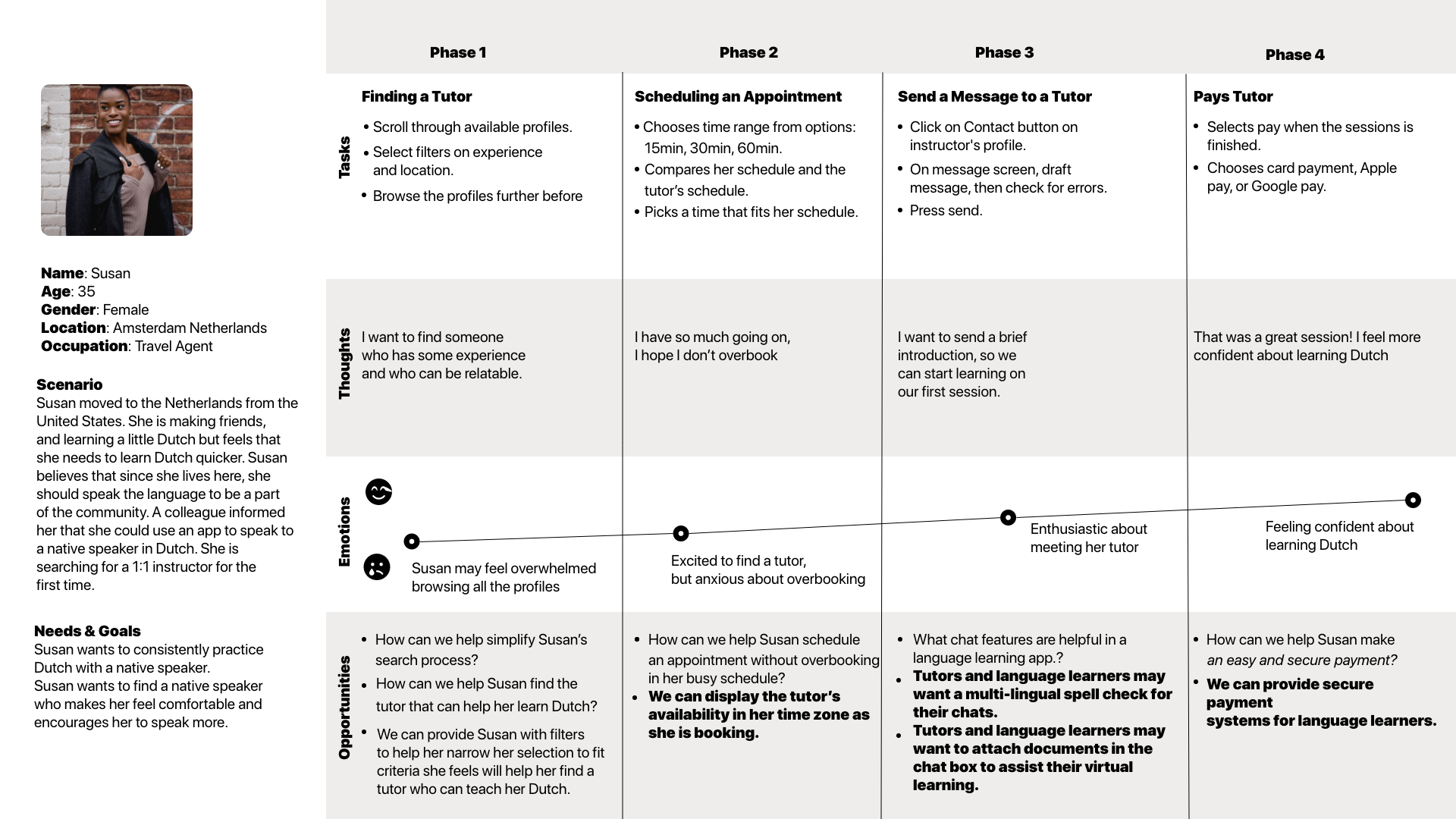
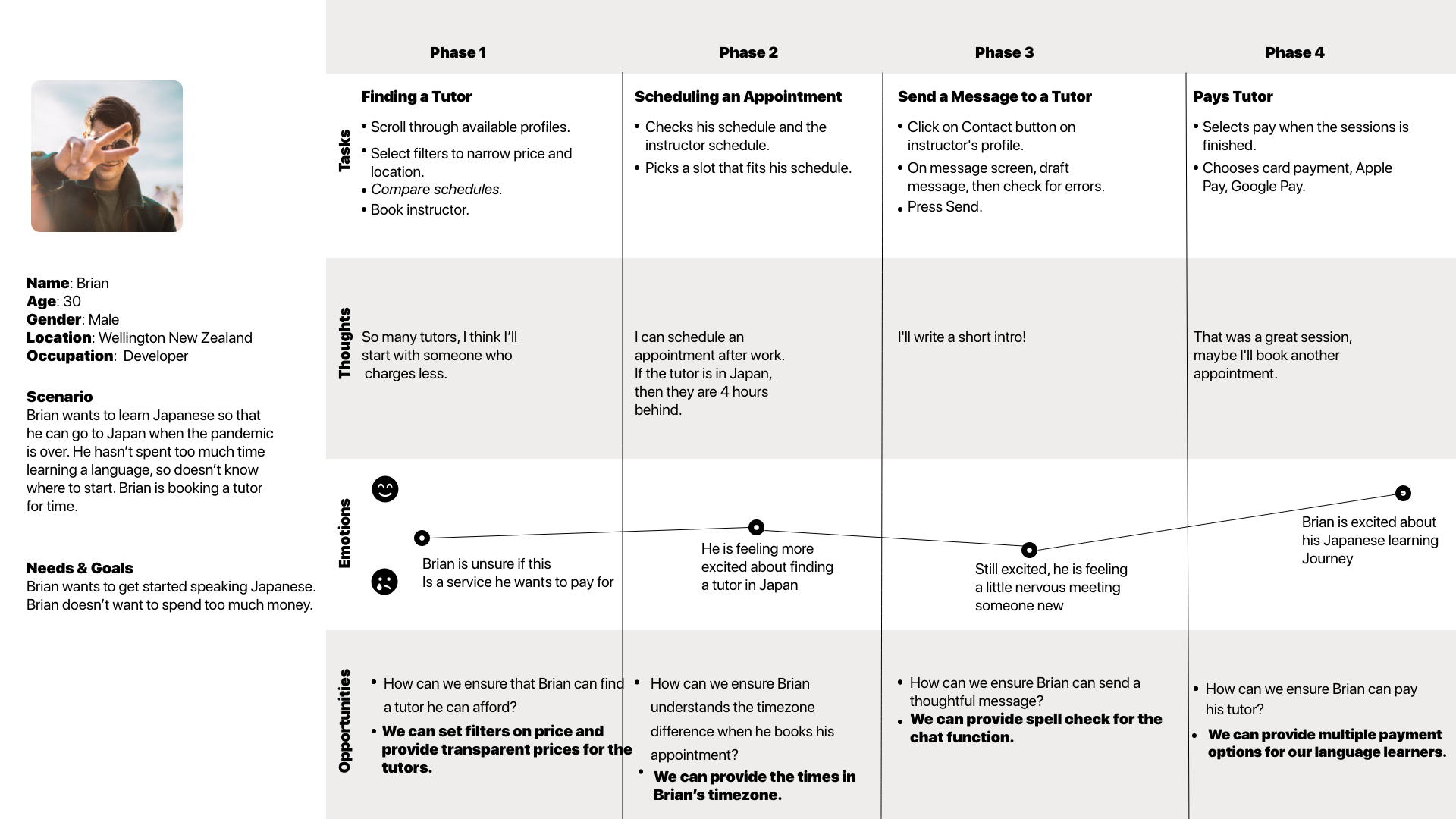
User Flows
-

Susan's Task Flow
1. Open app
2. Login/Forgot Password?
3. View Homescreen
4. Navigate profiles
5. Scroll profiles
6. Filter profiles to show native speakers
7. Select tutor
8. Select Book Now
9. Choose availability in calendar
10. Register for availability
-

Brian's Task Flow
1. Open app
2. Login
3. View Homescreen
4. View Previous Lessons
5. Select most recent tutor session
6. Book appointment with previous tutor
Site Map
-

Opitmal Sort
Open card sort feedback from 6 participants.
-

Map
From my open card sort, I noticed most participants expect to contact their tutor directly from their profile or from their lessons.
Low Fidelity WireFrames
-
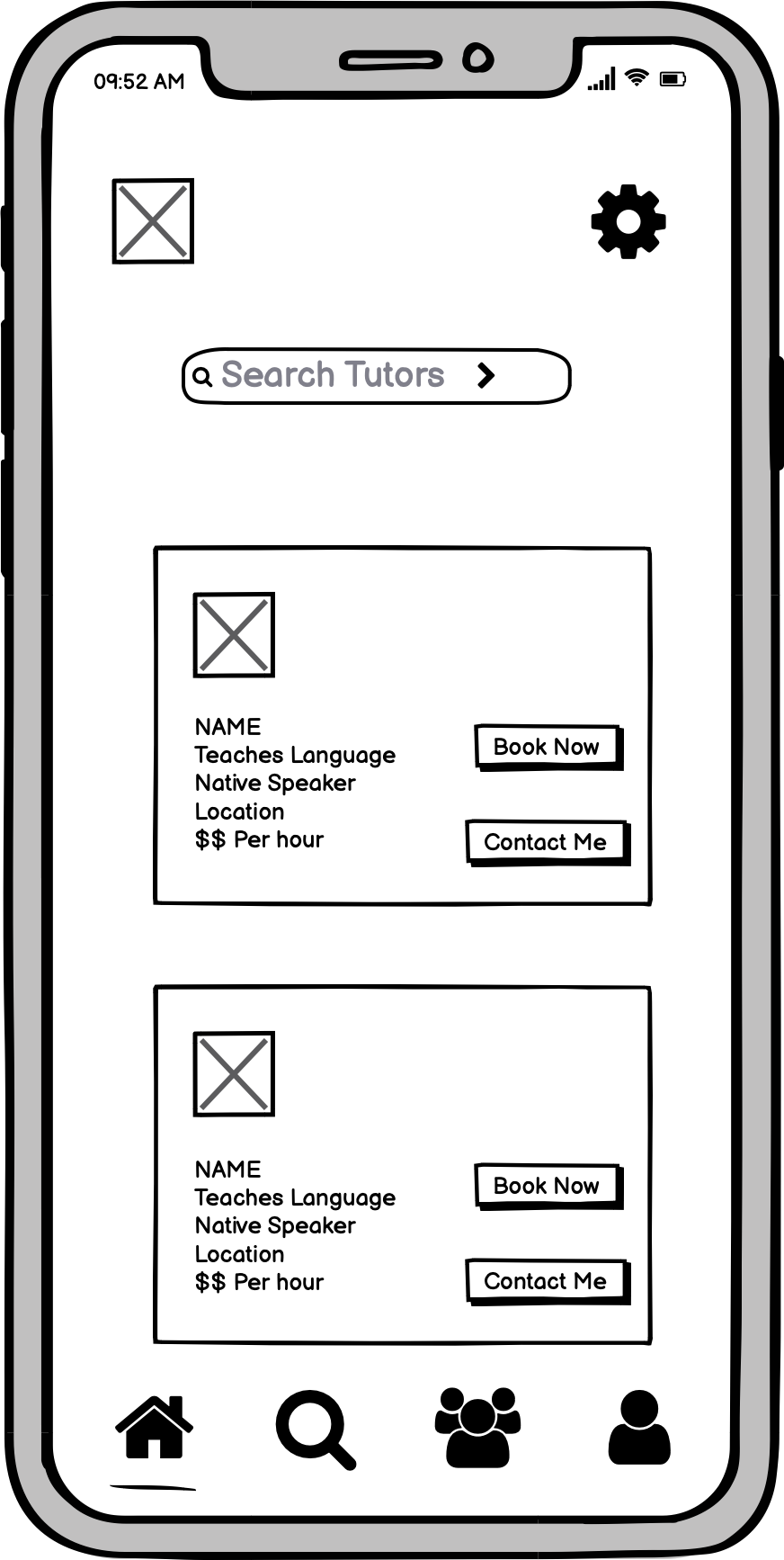
Dashboard
Using Balsamiq, I created low-fidelity wireframes for a language learning app that drew a lot of inspiration from iTalki’s navigation and features.
-
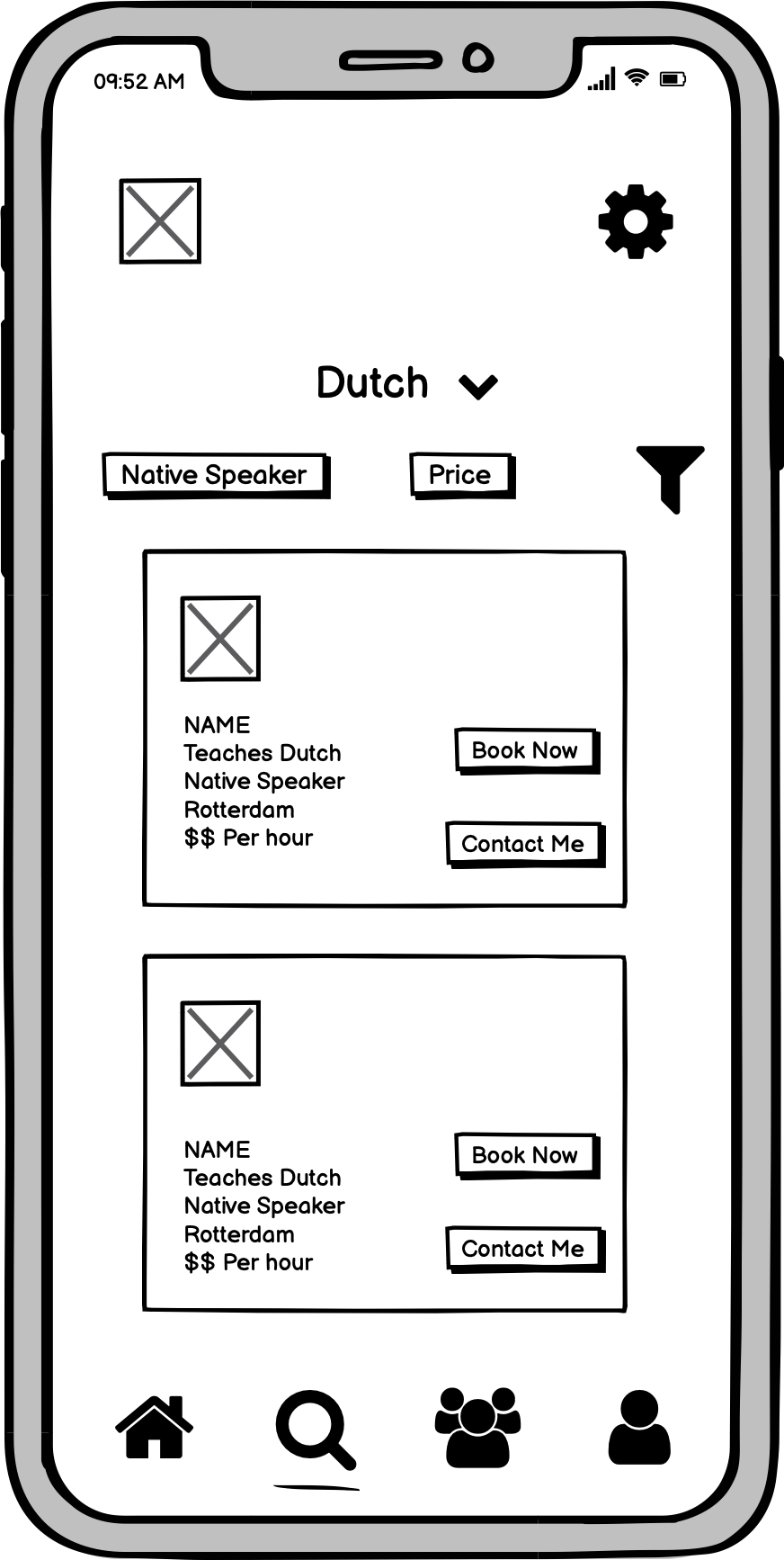
Search Screen
From iTalki, I appreciated how users can contact or book the tutors directly from their search, thus simplifying the potentially overwhelming task of finding a tutor.
-
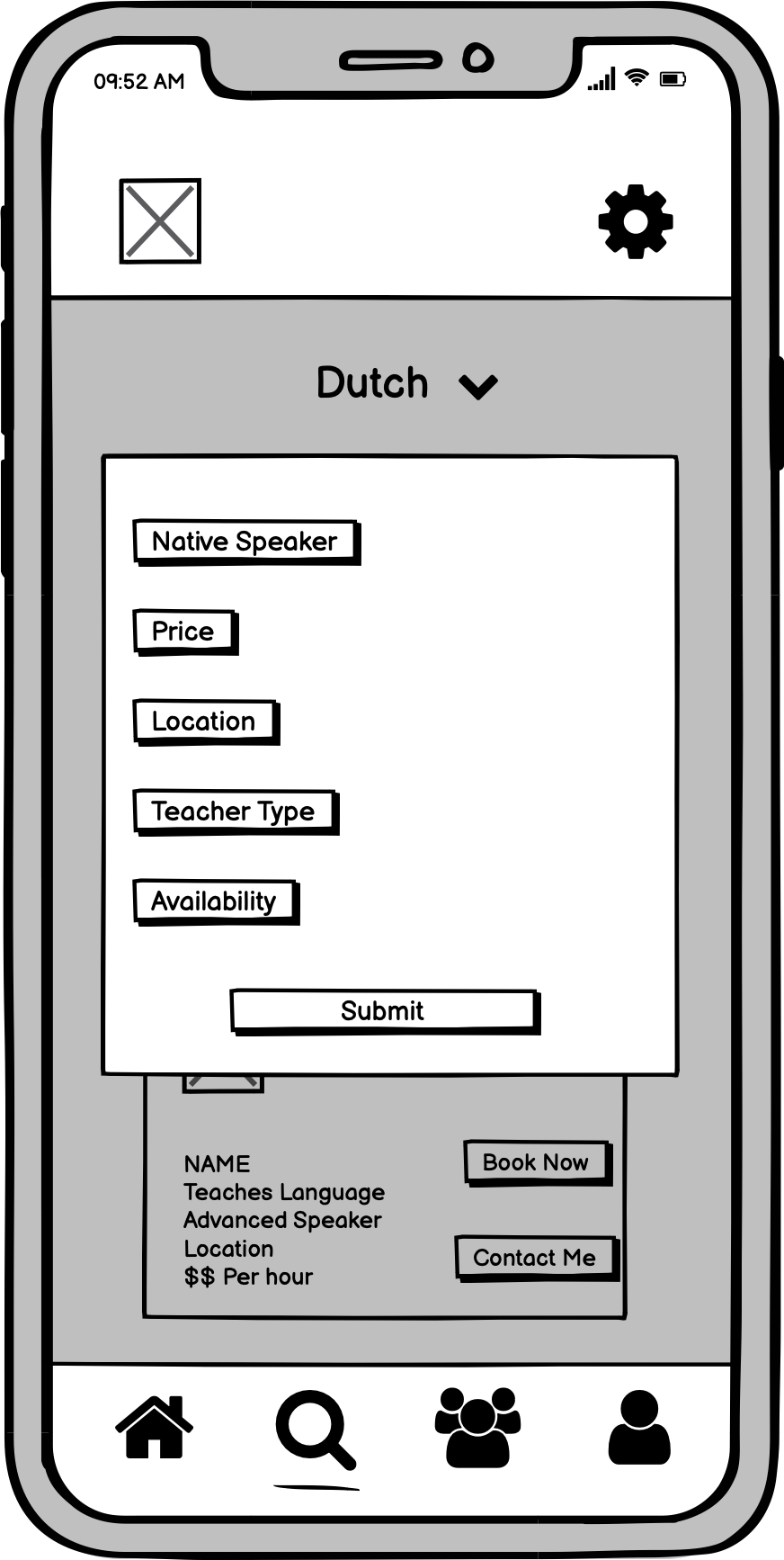
Filters
I also appreciated how users can filter their searches by choosing criteria that meet their needs.
Mid Fidelity WireFrames
-

Dashboard
Ensuring that users can access all functions from the dashboard, the next iteration of the dashboard wireframe provides a section dedicated to the users’ favorite tutors.
-

Search Screen
Too many buttons crowded in a small amount of space can possibly cause some user errors. I simplified the cards by providing only the book now button.
-

Filters
From my user interviews, I knew that price transparency is a concern so I added a pricing scale to the filters screen. I wanted to start with only a few filters to test their usefulness.
User Testing
-
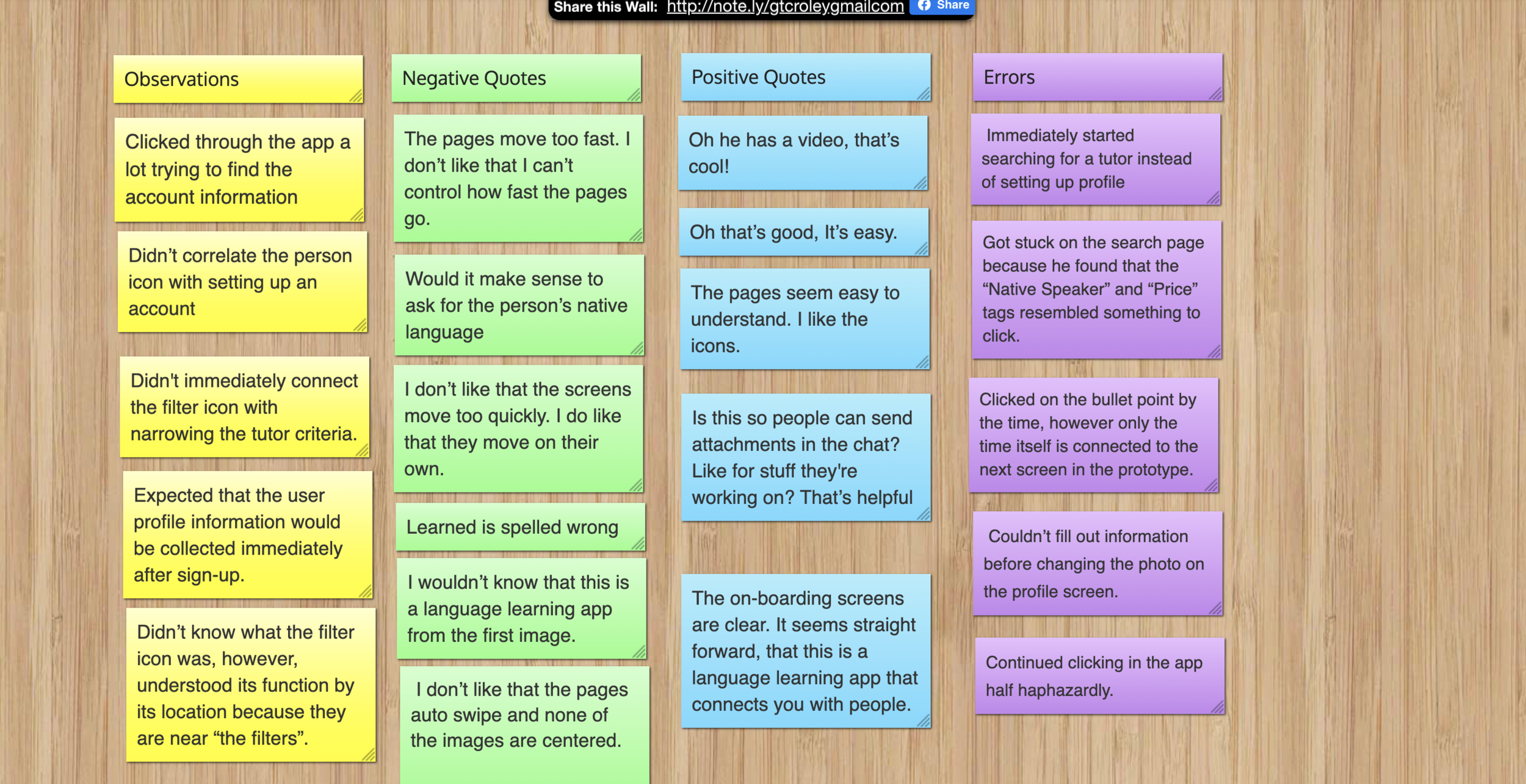
Six Participants Tested My Language Learning App
From my observations, I learned that users may need more prompts to set up their user profile. Also most participants didn't understand the filter icon, and had difficulty booking a tutor that met their criteria.
Final Thoughts
-
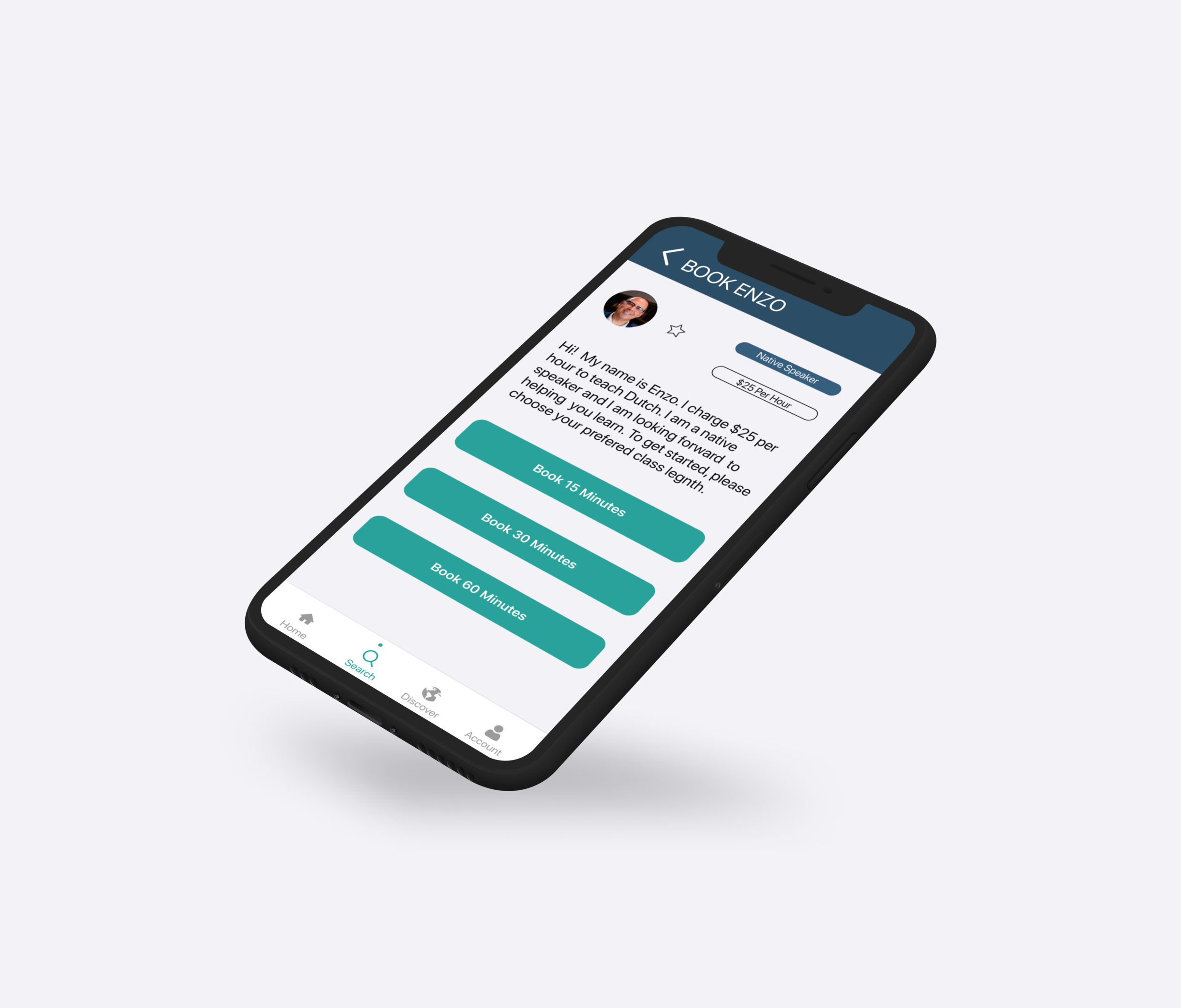
Reflection
Through this journey, I have learned that being curious and asking more questions go a long way. It's easy to think that we understand what people are saying and experiencing, but when you ask more follow-up questions, you can gain further insights. Moving forward, I would ask more demographic questions such as gender, as that may view how we experience language learning. Language is constantly evolving, so understanding more insights into someone's demographics and how they experience language learning can give exciting insights into how I can help them with their language learning journey.
-

Thanks for Reading!
Thank you for reading my language learning app case study! I would also like to thank Enzo, my roommate’s cat, who gave me much inspiration for my prototype’s tutor. Enzo doesn’t speak Dutch, but he does love communicating.




